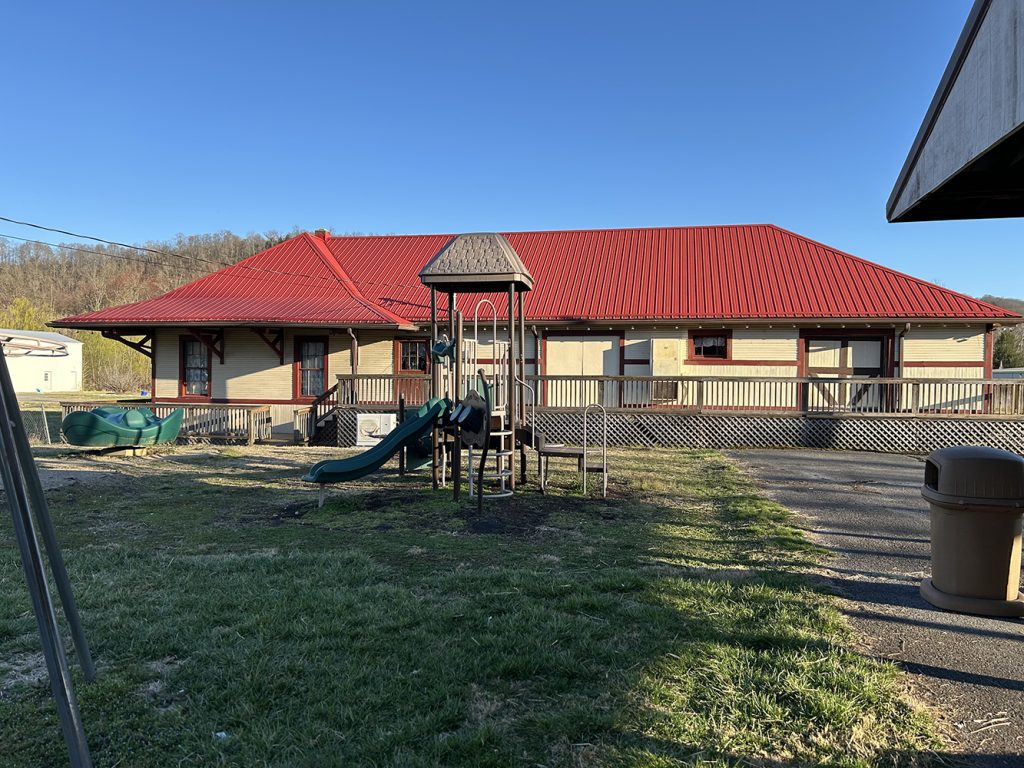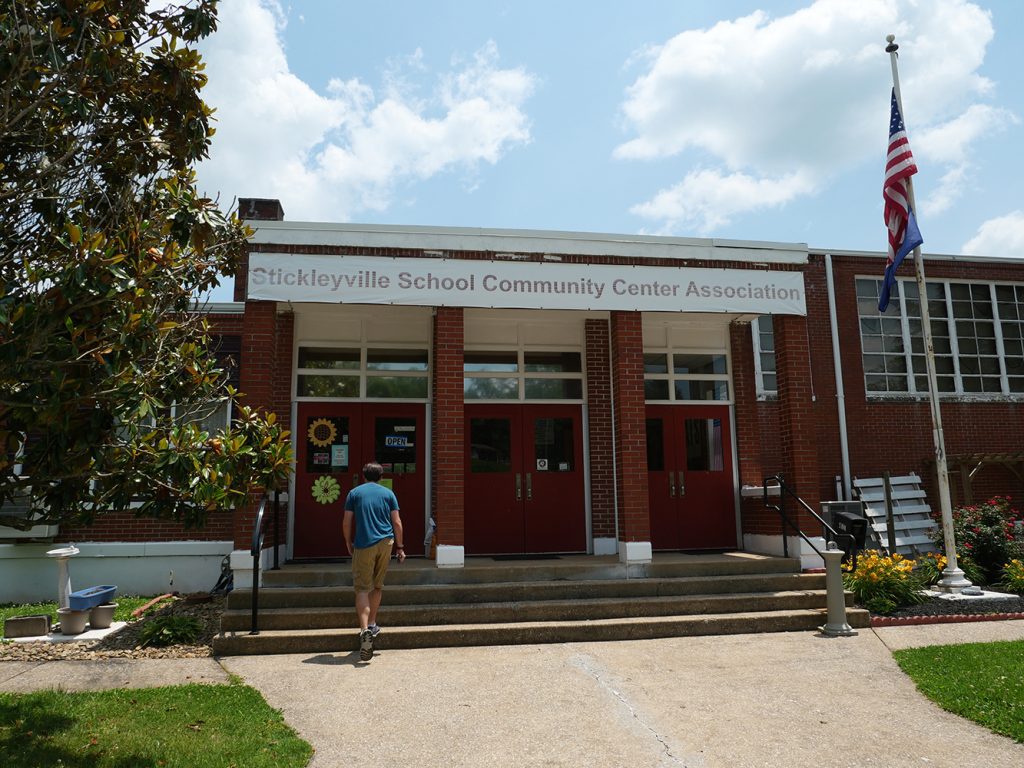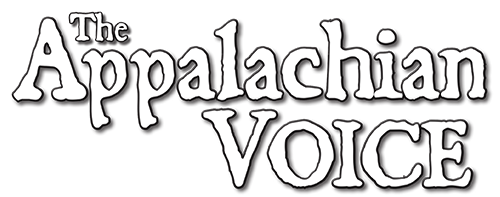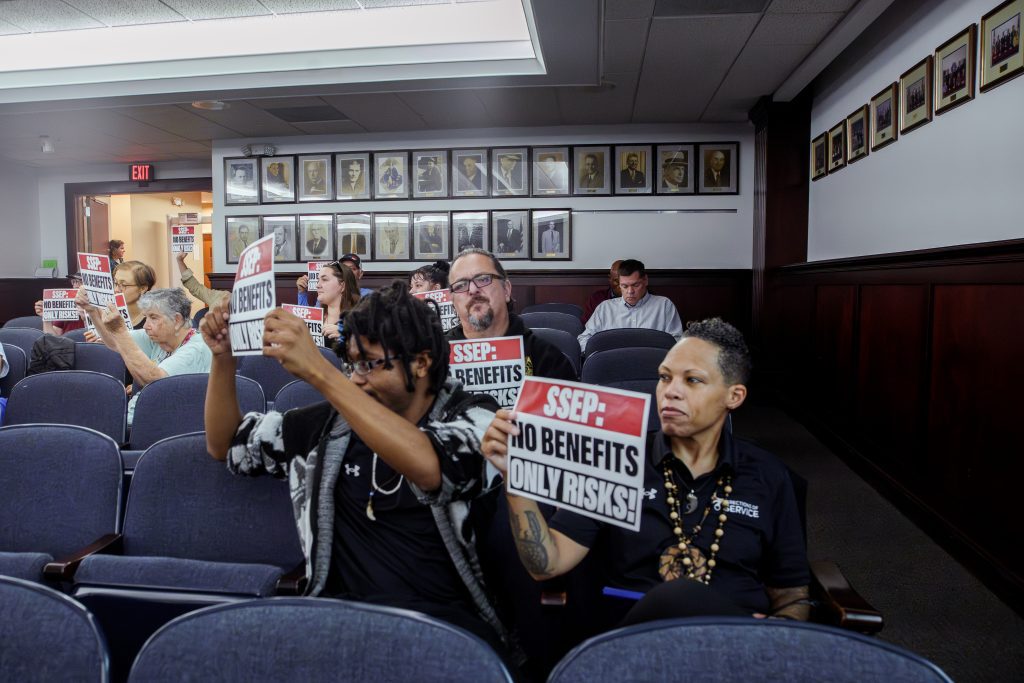Southwest Virginia Communities Prepare for Future Storms
When you round the curvy roads in Dungannon, Virginia, the old depot still stands in the middle of town, a reminder of a time when passenger trains still ran like clockwork through the Appalachian hills. Inside the depot, old historical paintings line the wall, and a portrait of President Franklin Delano Roosevelt overlooks the room, where rows of tables and folding chairs are set up for community gatherings and meetings.

At the depot, a series of listening sessions were held in 2024 and 2025, where residents came together to discuss ways for the community to build its ability to bounce back from natural disasters and other environmental and economic challenges.
These sessions were hosted by Appalachian Voices, the publisher of this newspaper, as part of its Community Strong initiative to partner with five Southwest Virginia communities to build resilience and revitalize their local economies. The work was supported by a grant from the Environmental Protection Agency that the agency terminated in February. Appalachian Voices is seeking to restore the grant, and meanwhile continuing to work with the five communities to develop projects.
In Dungannon, the plan includes transforming the historic depot into a resilience hub. A resilience hub is a place, such as a community center or school, that helps people stay safe and supported during emergencies such as floods or power outages. They provide emergency supplies, access to shelter and power, and a place to gather.
The necessity for these hubs across Southwest Virginia has become more apparent in recent years as the region has repeatedly been hit hard by floods. Many communities in addition to Dungannon are moving forward with plans for resilience hubs — proposals for hubs in Clinchco and Dante also came out of the Community Strong initiative.

Appalachian Voices has been partnering with Dungannon to find the financial resources to make building upgrades at the historic depot — including a solar system with battery storage. The plan is for the panels to be built on a new canopy covering the playground behind the depot, providing both shade and electricity.
Dungannon community member Beth Bingman says that the electricity from the solar and battery storage is “the most important thing for people who have health devices.”
Bingman is proud of the leading role that Dungannon residents are taking in making the town more resilient and believes it can serve as a model for other rural Appalachian communities.
“Here, there’s been a lot of community efforts around a lot of things over the years,” Bingman says. “It’s the kind of thing where people here in the neighborhood hear, ‘Oh, this is happening, and this is what it’s going to mean.’”

In Clinchco, the community is considering several different locations that could serve as a resilience hub. Clinchco is also one of 10 localities participating in a state program called the Virginia Energy Resilience Study, which works with communities to measure their energy resilience and help identify practical, long-term solutions to reduce energy-related vulnerabilities.
The University of Virginia’s College at Wise was awarded the EPA’s Change Grant in 2024 to conduct resilience hub planning in Southwest Virginia, but the Trump administration cancelled the grant in 2025. UVA Wise is still planning resilience projects in Carroll and Dickenson counties, and hopes to extend that planning to other communities in the future.
With climate change predicted to bring more intense rainfall events to Central Appalachia, Southwest Virginia communities are likely to face worsening natural disasters. Resilience hubs are one of the main ways that communities can come together to weather the storm.

Related Articles
Latest News

Leave a comment
Your email address will not be published. Required fields are marked *




![“The hooded warbler is what I call my spark bird, which is [the bird that] gets you into birding,” Fox says. “You see a bird, and it gets you wondering what it is, and then suddenly you discover there's this whole world of birds that you didn't know about.” Photo by Kelly Fox](https://appvoices.org/wp-content/uploads/2025/10/HoodedWarbler-1024x682.jpg)
Leave a Comment